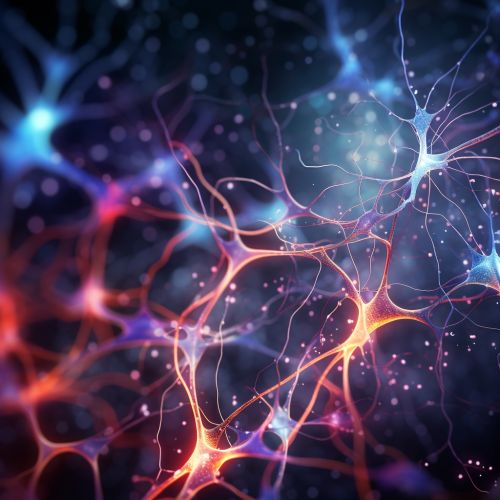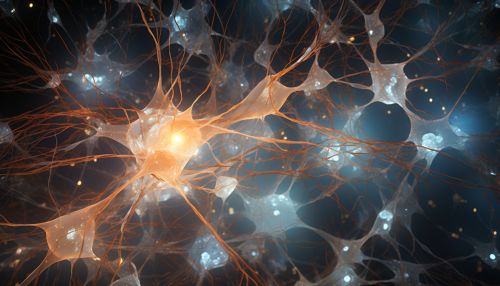Nervous system
Overview
The nervous system is a complex network of nerves and cells, known as neurons, that transmit signals between different parts of the body. It is essentially the body's electrical wiring and is responsible for controlling everything from our senses to the movements we make, to the thoughts we have.
Structure
The nervous system is divided into two main parts: the central nervous system (CNS) and the peripheral nervous system (PNS). The CNS consists of the brain and spinal cord, while the PNS consists of all other neural elements, including the eyes, ears, skin, and other "sensory receptors".


Central Nervous System
The central nervous system is the control center of the body. It interprets sensory information and dictates motor responses. The CNS is divided into two major parts: the brain and the spinal cord.
Brain
The brain is the most complex part of the nervous system. It is responsible for processing sensory data, controlling motor functions, regulating body functions, and is the seat of intelligence, learning, memory, and emotion.
Spinal Cord
The spinal cord is a long, thin, tubular bundle of nervous tissue and support cells that extends from the brain. Its primary function is to transmit neural signals between the brain and the rest of the body.
Peripheral Nervous System
The peripheral nervous system connects the CNS to the limbs and organs. Unlike the CNS, the PNS is not protected by bone, leaving it exposed to toxins and mechanical injuries. The PNS is divided into the somatic (SNS) and autonomic (ANS) nervous systems.
Somatic Nervous System
The somatic nervous system (SNS) is responsible for voluntary movement of the muscles and organs and reflex movements. In the somatic system, nerve fibers of motor neurons connect to skeletal muscles.
Autonomic Nervous System
The autonomic nervous system (ANS) is responsible for control of the bodily functions not consciously directed, such as breathing, the heartbeat, and digestive processes. It is further divided into the sympathetic and parasympathetic nervous systems.
Function
The nervous system is involved in receiving information about the environment around us (sensation) and generating responses to that information (motor responses). The nervous system can be categorized according to its functions: sensory, integrative, and motor.
Sensory Function
The sensory function of the nervous system involves collecting information from sensory receptors that monitor the body’s internal and external conditions. These signals are passed on to the central nervous system (CNS) for further processing.
Integrative Function
The process of integration is the processing of many stimuli or inputs from the sensory parts of the nervous system to make an appropriate response.
Motor Function
The motor function is the physiological response to the integrative function. The response activates muscles or glands in our body.
Disorders of the Nervous System
There are many neurological disorders that can affect the nervous system. These can range from common conditions such as migraines and epilepsy to more serious conditions like Parkinson's disease and Alzheimer's disease.
